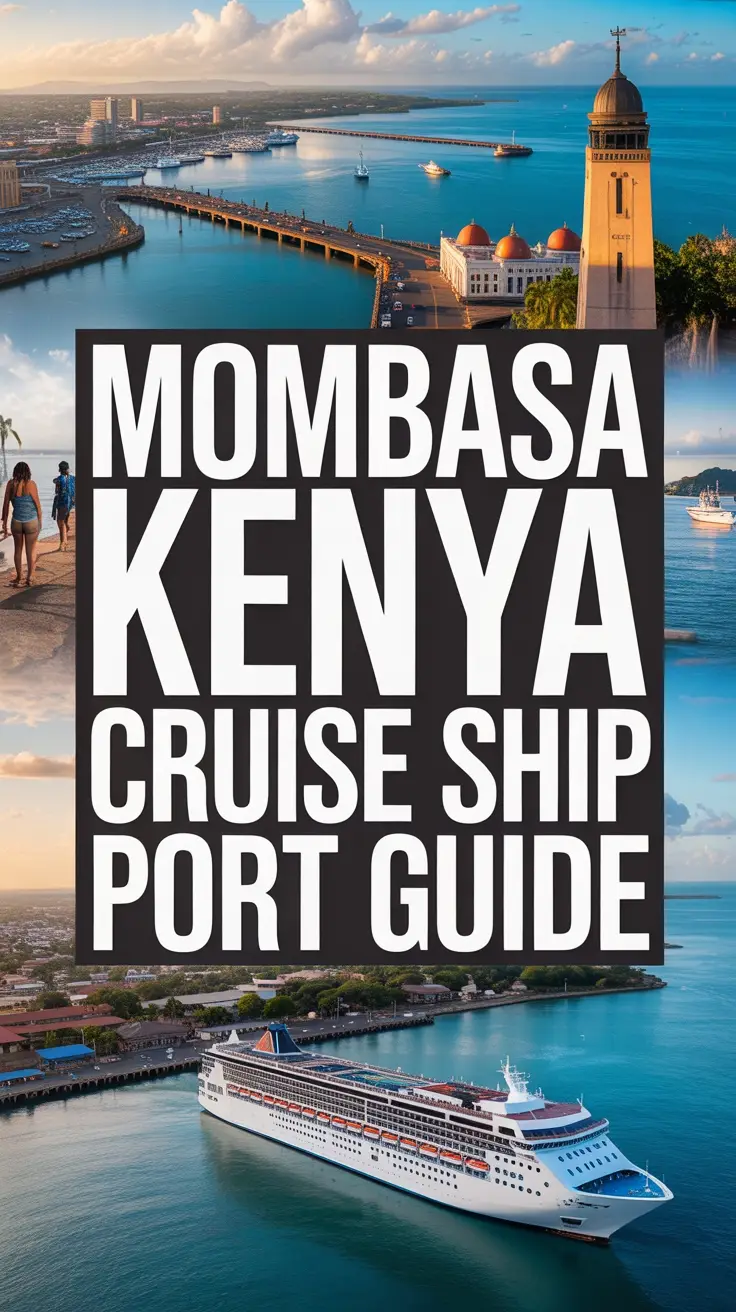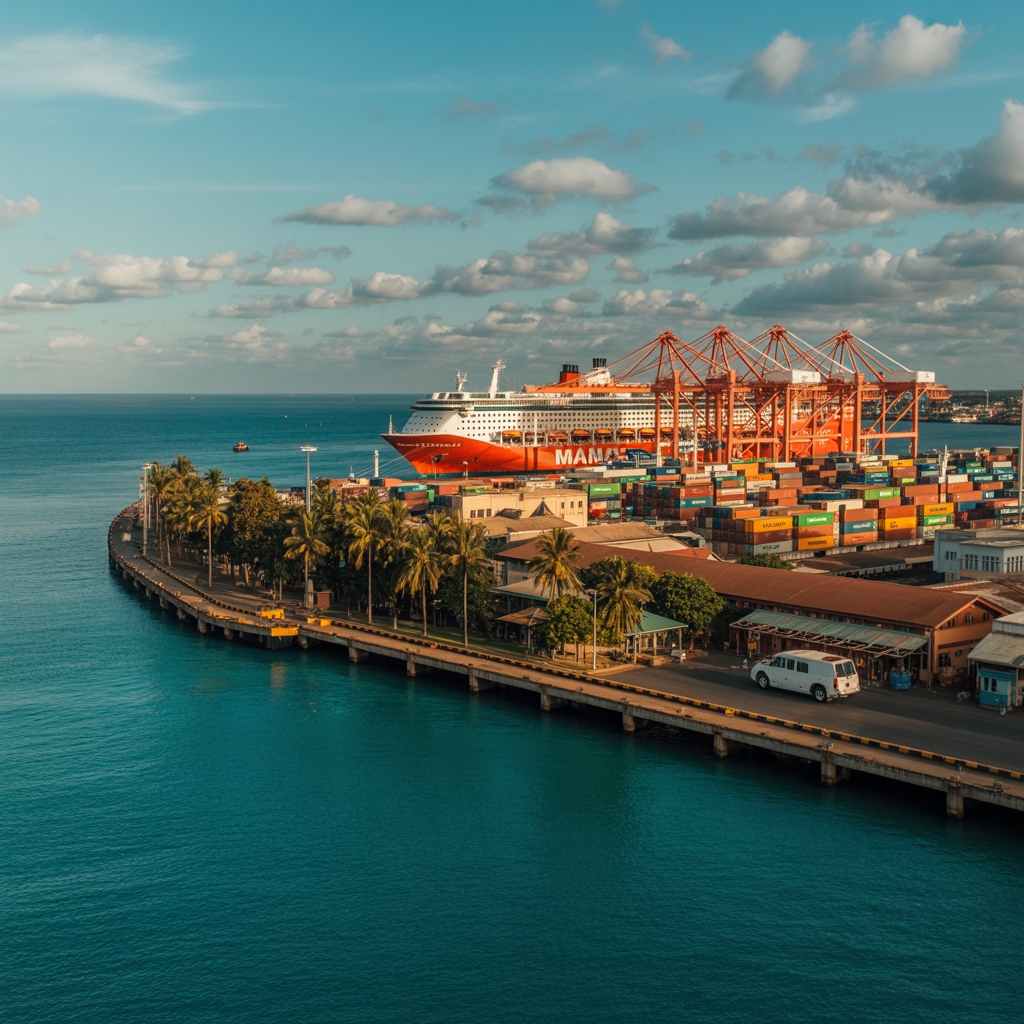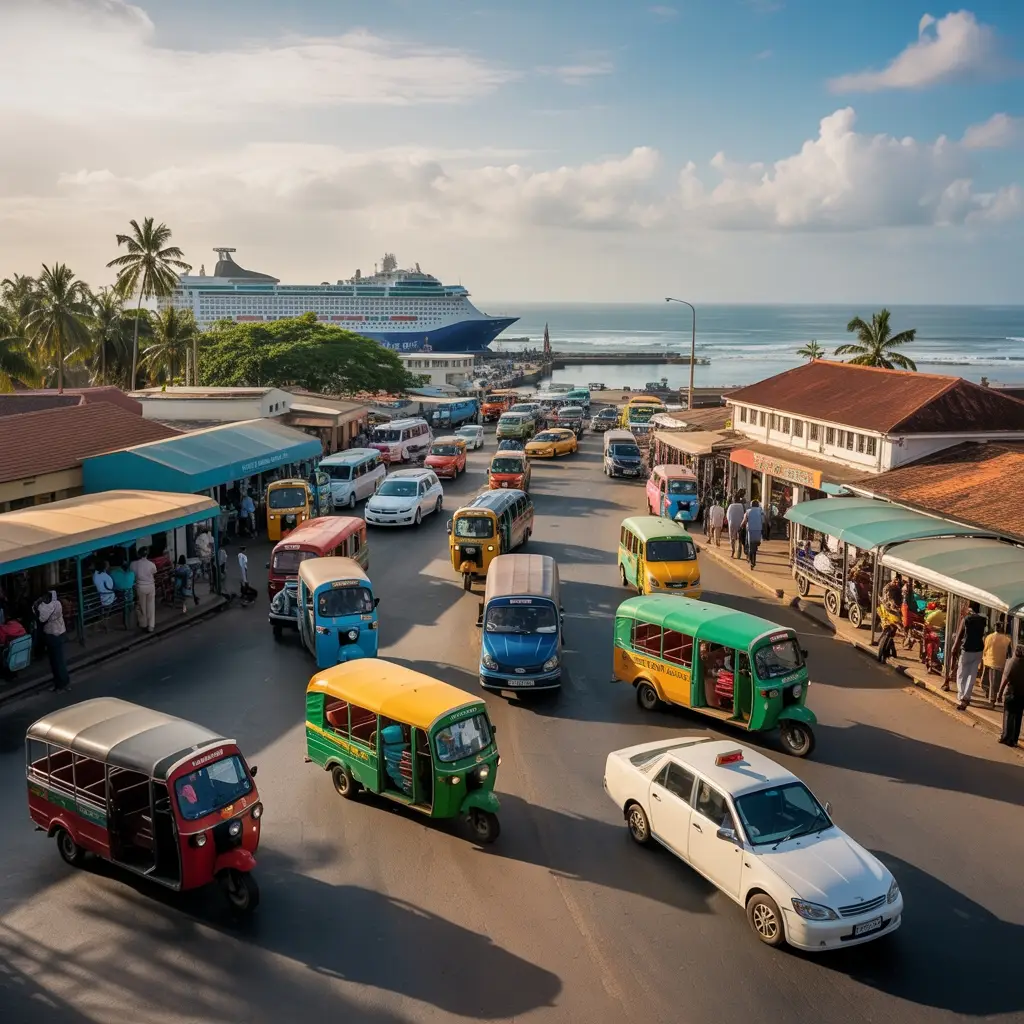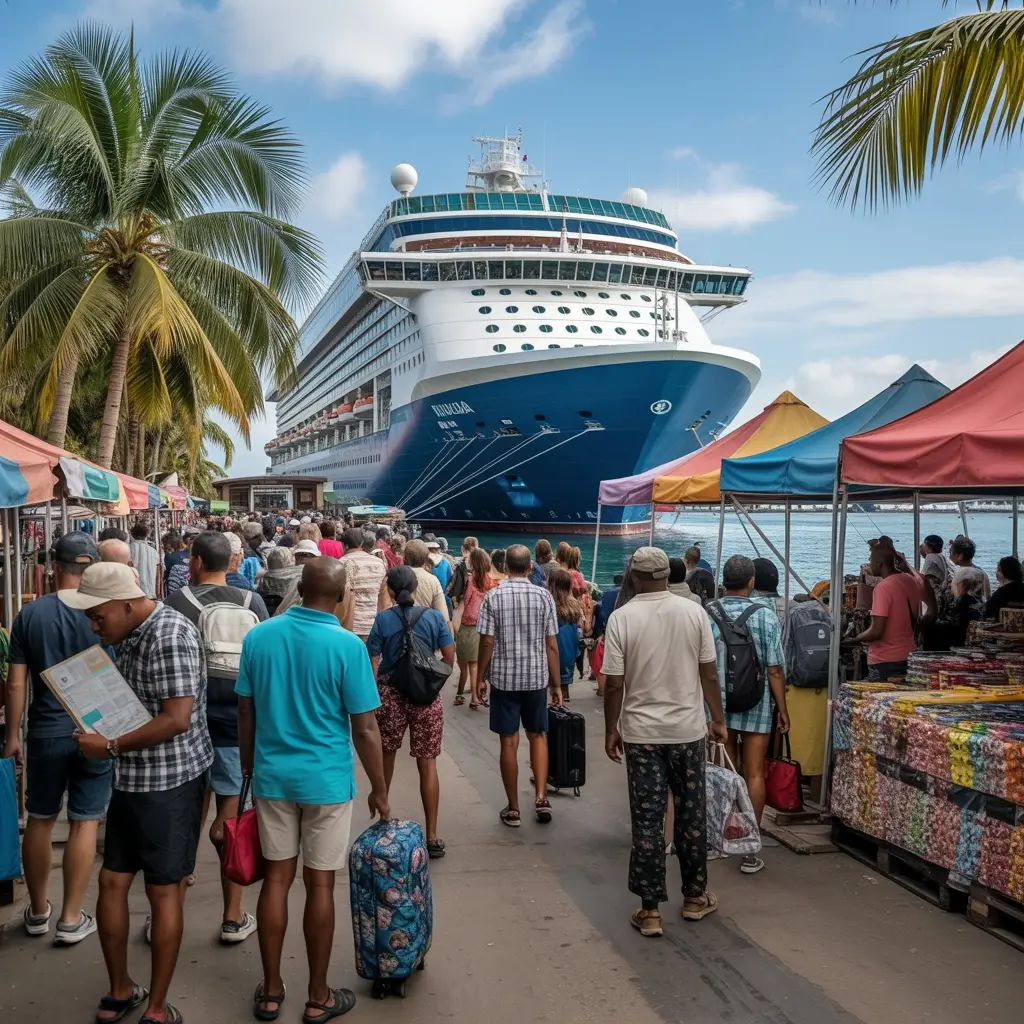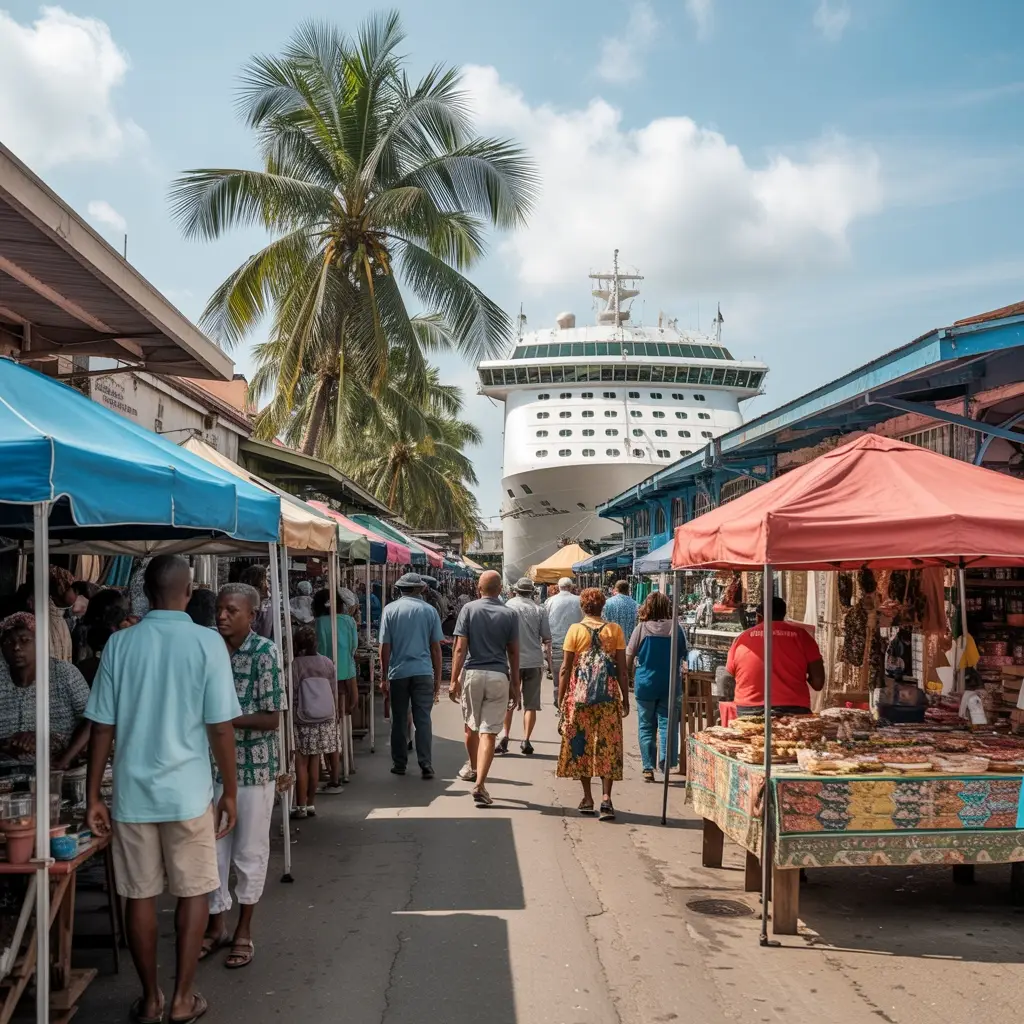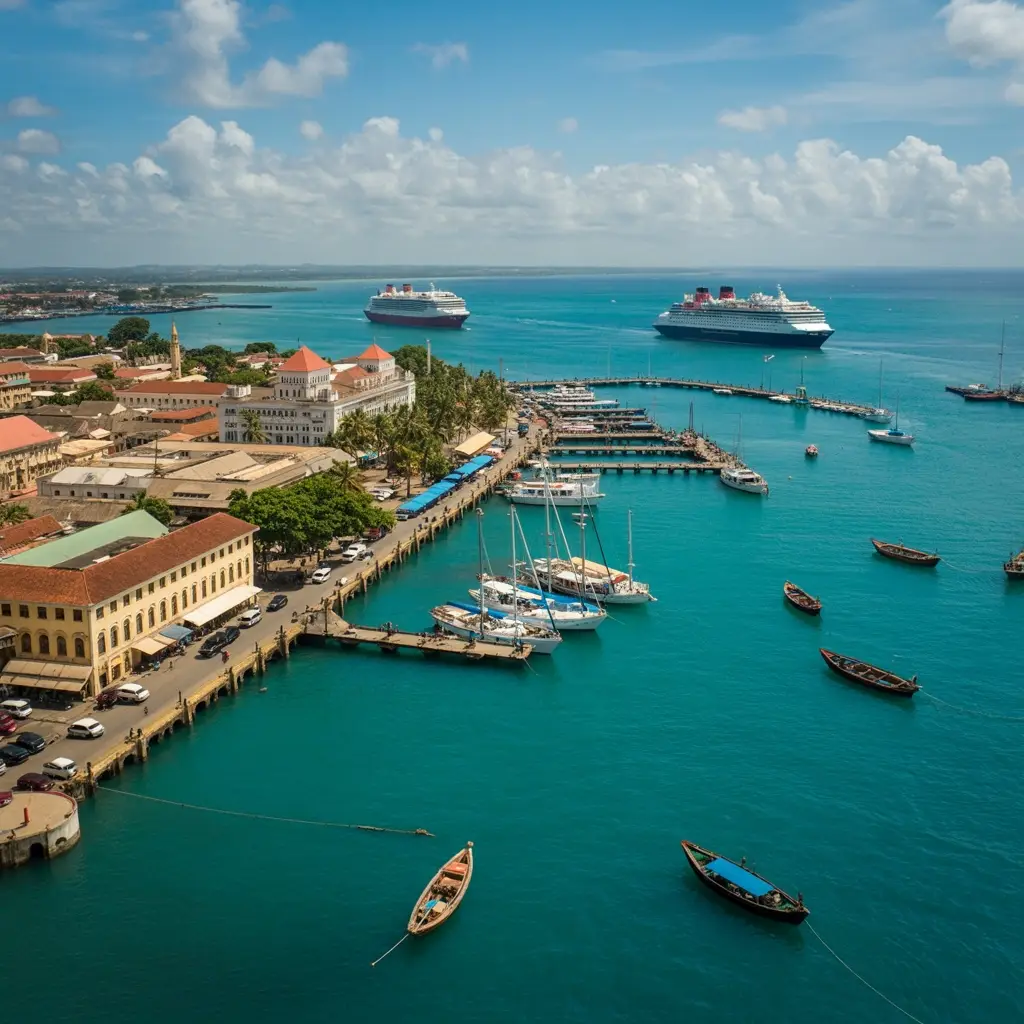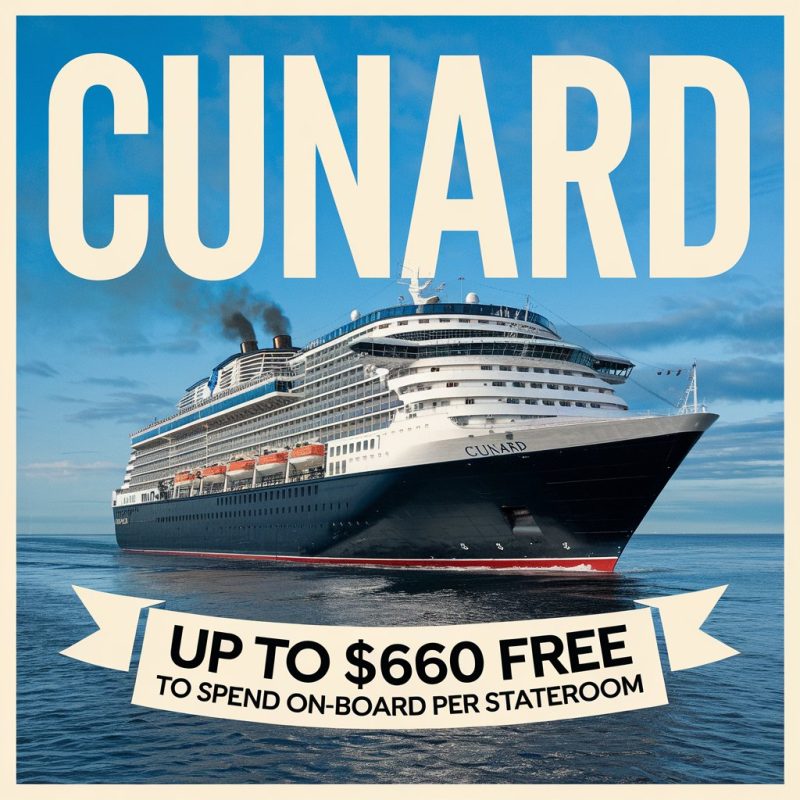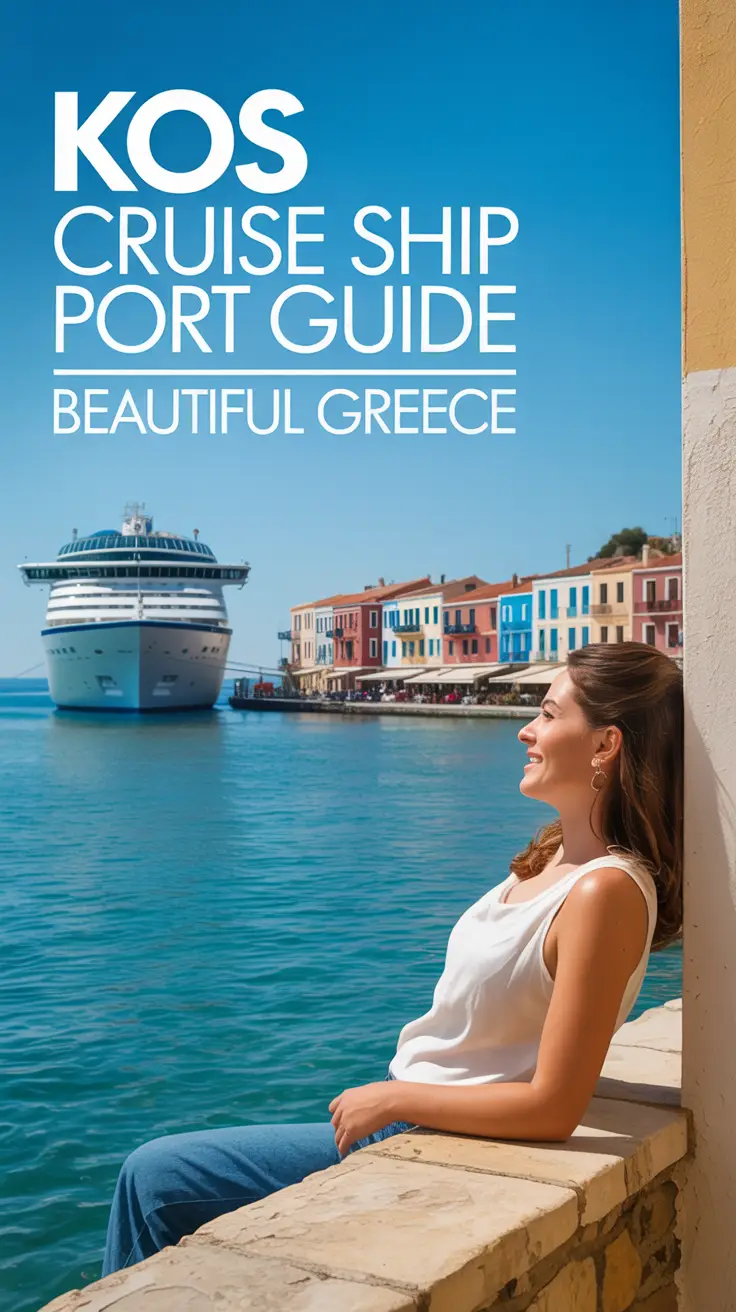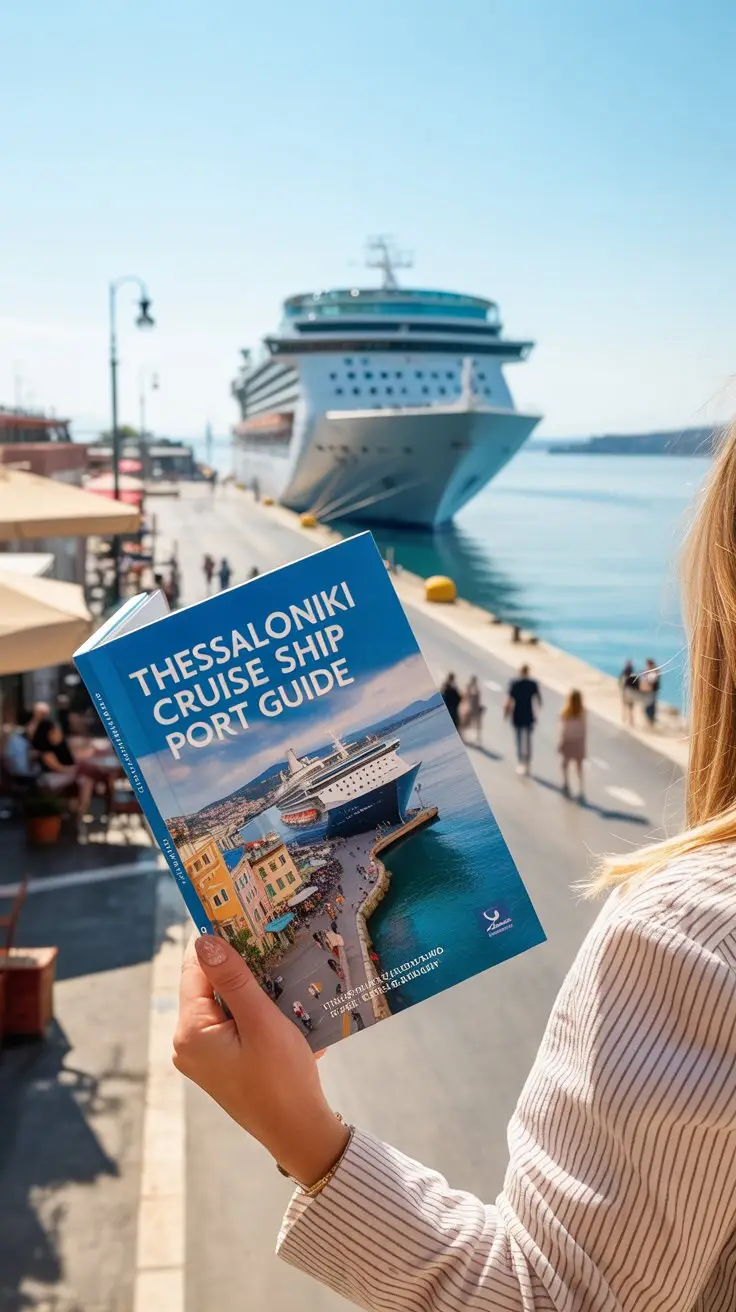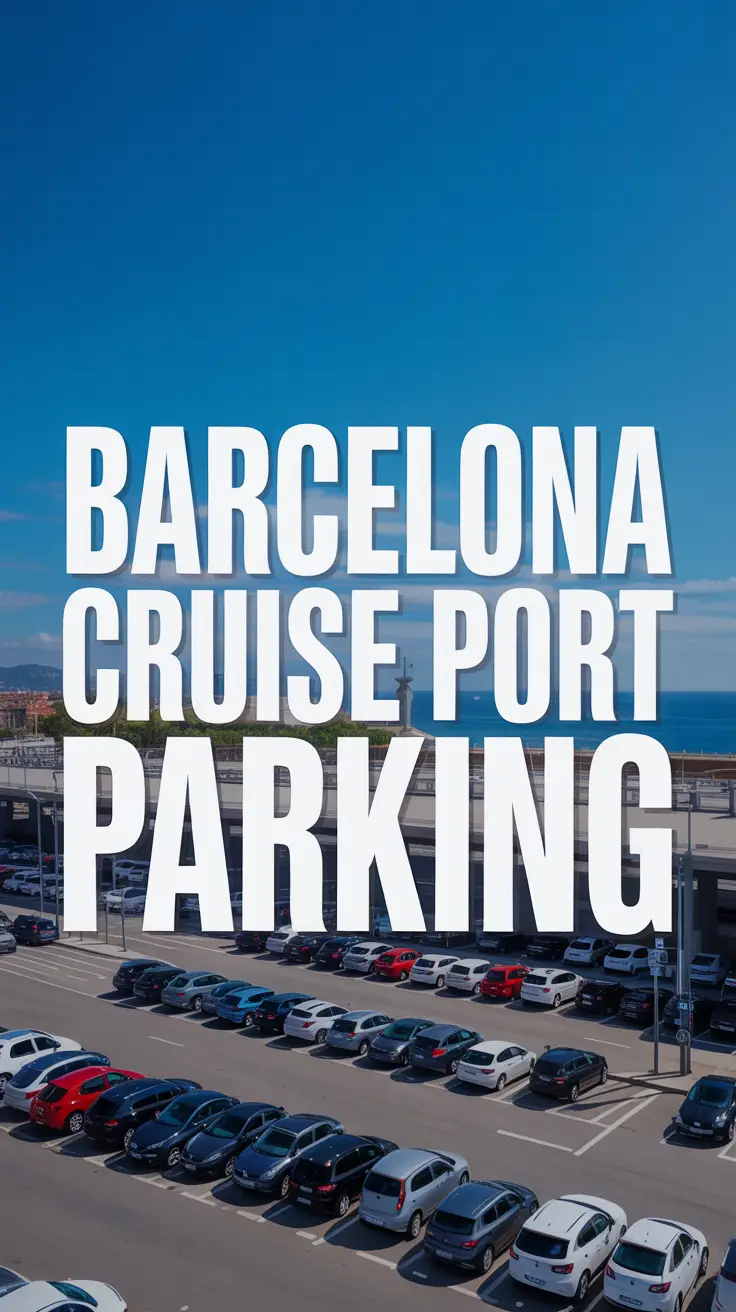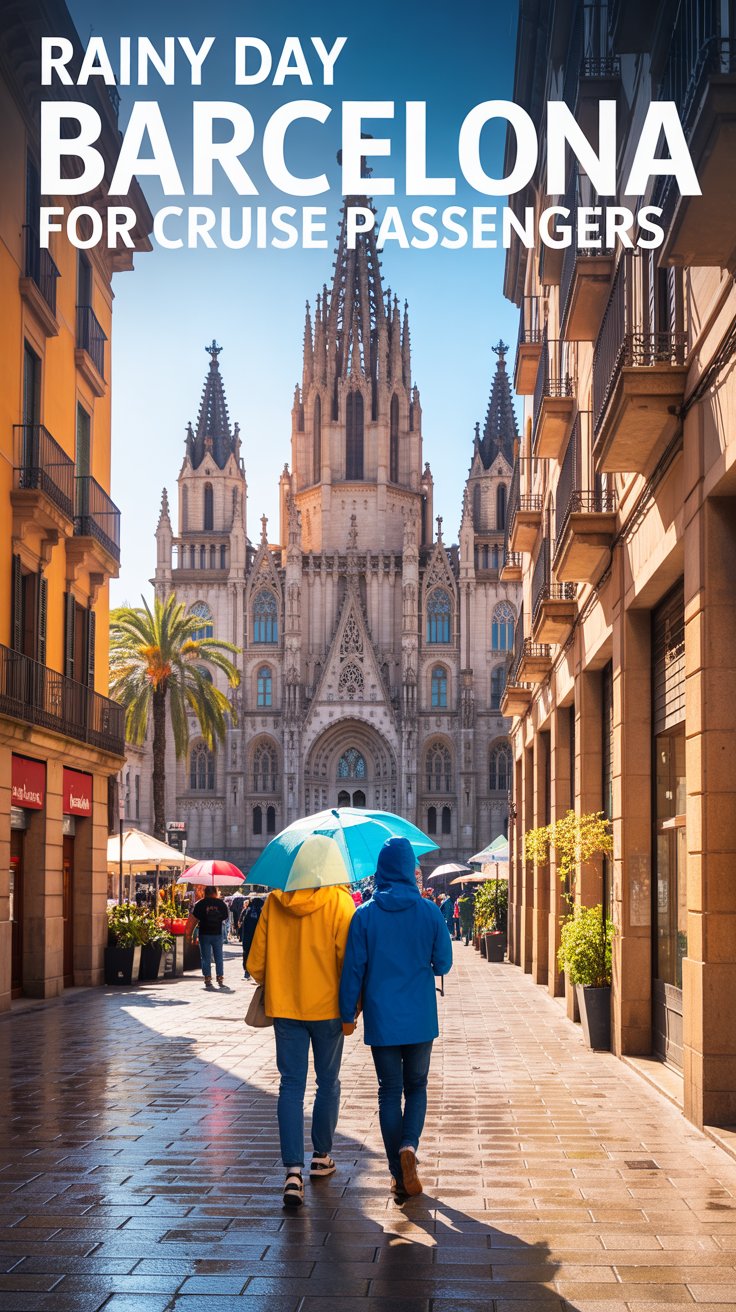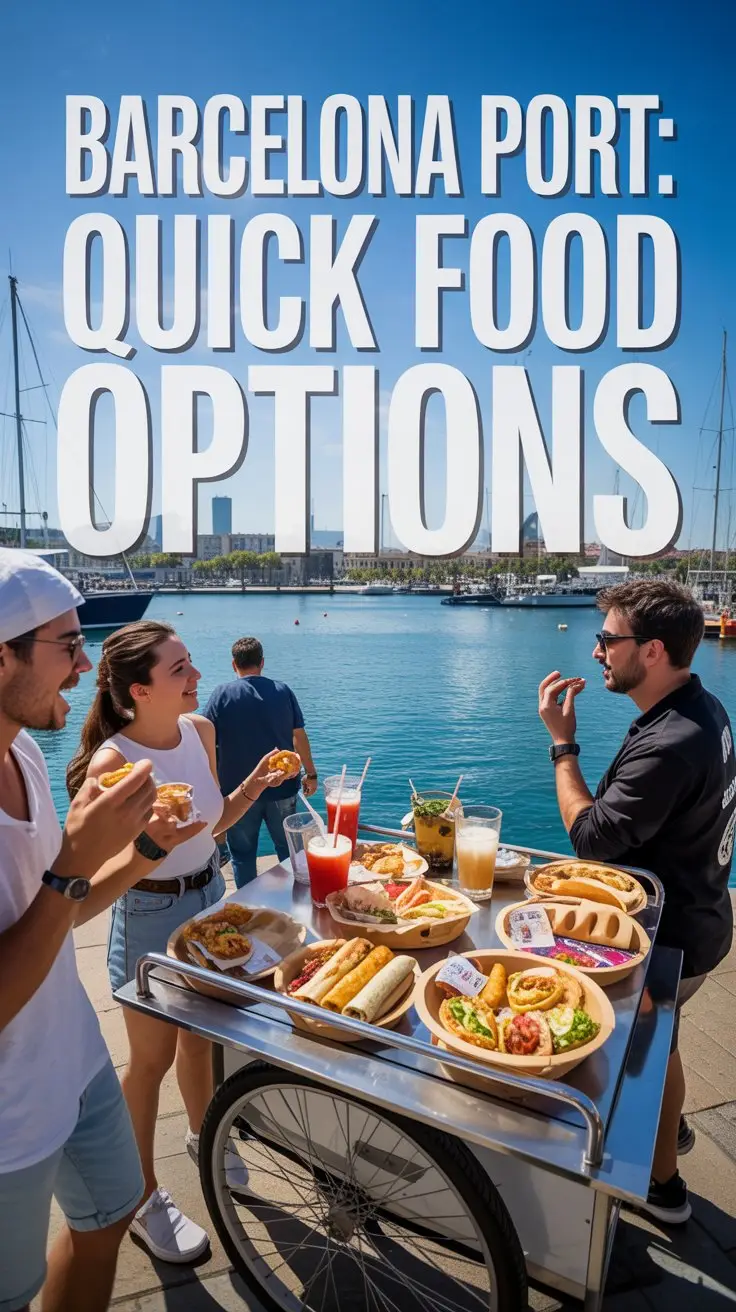Introduction to the Port
Envision this: you’re stepping off your cruise ship onto Kenyan soil, and the first thing that hits you is the warm, spiced air mixing salt spray with hints of cardamom and cloves from the nearby markets.
The sail-shaped roof of Mombasa’s cruise terminal catches the Indian Ocean breeze, creating these clever wind scoops that actually keep you cool while you’re sorting through customs – honestly, whoever designed that deserves a medal.
You’ll hear the gentle hum of Swahili conversations, see the brilliant blue harbor stretching toward the horizon, and feel that unmistakable excitement of being somewhere completely new and wonderful.
But here’s the thing about Mombasa Port – it’s not just pretty to look at, it’s incredibly well-organized for cruise passengers like us who need to navigate everything from immigration to finding the perfect souvenir without losing our minds.
The converted historic sheds house everything you need right there: customs offices that actually move quickly, restaurants where you can grab a bite, and shops that won’t completely empty your wallet.
I’m going to walk you through exactly how to make the most of your time here, from the moment you dock at Berth 1 to when you’re heading back with arms full of Kenyan coffee and a camera full of memories.
Map of Mombasa Kenya Cruise Ship Port
Why Cruise From this Port?
Mombasa isn’t just another pretty port stop – it’s your gateway to adventures you literally can’t get anywhere else on the planet.
-
- Year-round sailing weather means you’ll never deal with those awful hurricane season cancellations.
-
- Four-hour drives get you face-to-face with elephants in Tsavo National Park.
-
- Fort Jesus and Old Town offer 500-year-old history you can actually touch and walk through.
-
- Perfect homeport location for exploring Madagascar, Seychelles, and Mauritius in one trip.
-
- Local markets sell authentic Maasai jewelry and Kenyan coffee at prices that’ll make you laugh.
“I’ve been working with cruise passengers for fifteen years, and I can tell you that Mombasa changes people,” says Margaret Wanjiku, Senior Passenger Services Coordinator at Kenya Ports Authority.
“They come here thinking it’s just another beach stop, but then they’re standing next to a giraffe at sunset or haggling for spices in a 400-year-old market, and suddenly they’re already planning their return trip before they’ve even left the country.”
Cruise Terminal(s) Overview
| Terminal | Facilities | Distance to City Centre | Walkable | Luggage Storage | WiFi Availability (Yes/No) |
|---|---|---|---|---|---|
| Mombasa Cruise Terminal | Immigration center, duty-free shops, restaurants, lounges, conference spaces, customs & passport control, 1,000+ vehicle parking | 15km (9 miles) | No | Yes | Yes |
Look, I’m going to be honest with you – Mombasa has exactly one cruise terminal, but what a terminal it is. This isn’t some converted warehouse with a folding table and a guy named Bob checking passports. We’re talking about a proper, modern facility that can handle two massive Oasis-class ships at the same time, which means if you’ve ever felt cramped during boarding, those days are behind you.
The terminal itself looks like someone took a sail and turned it into a building, complete with these clever wind scoops that keep things cool without cranking the air conditioning to arctic levels. Smart design, really, especially when you consider that most of us are dressed for vacation, not a polar expedition.
Inside, you’ll find everything you need and several things you didn’t know you wanted. The duty-free shopping is solid – not just the usual overpriced perfume and chocolate, but actual Kenyan crafts and coffee that’ll make your neighbors jealous. The restaurants serve both familiar international food and local dishes, though I’d recommend saving your appetite for the incredible street food waiting outside if you’re feeling adventurous.
The immigration center processes passengers efficiently, which matters more than you might think when you’re enthusiastic to start exploring. There’s secure luggage storage if you want to wander around Mombasa before your cruise departs, and the WiFi actually works, unlike that spotty connection you probably had at the hotel.
The three-story structure gives you panoramic views of the Indian Ocean, which is exactly the kind of thing that makes waiting for departure feel less like waiting and more like the vacation has already started. The conference facilities might seem random until you realize this terminal was built to handle everything from intimate expedition ships to floating cities carrying thousands of passengers.
What really sets this terminal apart is how it connects to everything else. You’re not stuck in some isolated port facility – you’re positioned perfectly to explore Tsavo National Park, Old Town Mombasa, or even catch that heritage steam train if the timing works out. The terminal feels less like a departure point and more like the beginning of something bigger, which is exactly what you want when you’re about to spend days or weeks exploring the Indian Ocean.
Transport Options to the Port (From City Centre)
Getting from Mombasa’s city center to the cruise port gives you several options, from budget-friendly public transport to door-to-door private services that’ll have you feeling like royalty.
| Transport Option | Cost Estimate (€/$) | Travel Time | Frequency | How to Book/Use |
|---|---|---|---|---|
| Private Transfer | $76+ | 15-30 minutes | On-demand | Pre-book online with pickup time |
| Taxi | $15-25 (estimated) | 15-30 minutes | 24/7 available | Hail on street or hotel assistance |
| Public Bus/Matatu | $1-3 | 45+ minutes | Regular intervals | Board at city stops, may require transfers |
| Tour with Transfer | $130+ per group | 8 hours total | By appointment | Book full-day package in advance |
| Walking | Free | Not recommended | Always available | Only viable from Old Town area |
How to Get from the Airport to the Cruise Port
Getting from Mombasa’s airport to the cruise port is pretty straightforward, with private transfers being your most reliable bet for a stress-free journey.
| Transport Option | Cost Estimate (€/$) | Travel Time | Frequency | How to Book/Use |
|---|---|---|---|---|
| Private Transfer | $35-76 | 15-25 minutes | On-demand | Pre-book online, driver meets you with nameplate |
| Airport Taxi | $25-40 (estimated) | 15-25 minutes | 24/7 available | Available at taxi stand outside terminals |
| Car Hire | $30+ per day | 15-25 minutes | Business hours | Book at airport counter, self-drive option |
| Limo Service | $100+ | 15-25 minutes | By appointment | Premium pre-booking required |
Parking and Accessibility at the Port
The good news about parking at Mombasa’s cruise port is that you’ve got plenty of options, and even better news – those pesky parking fees got suspended in early 2025.
-
- Multiple parking areas – North and South sides of the port both have dedicated spaces, plus over 10 multi-level garages including Garages A, B, and AA.
-
- Short walking distances – All garages are positioned close to the cruise terminals, so you won’t be dragging your luggage across half of Kenya.
-
- Various vehicle sizes welcome – Whether you’re driving a compact car or something bigger, there are designated zones that’ll fit your ride.
-
- Reserve ahead if you want – Pre-booking options are available for those of us who like to have everything locked down.
-
- Security covered – 24/7 monitoring keeps your car safe while you’re off exploring the Indian Ocean.
-
- Future upgrades coming – KPA is building an ultramodern cruise complex at Berths 1 and 2, which means even more parking and airport-style facilities on the horizon.
Common Mistakes First‑Time Cruisers Make at the port
First-time cruisers often stumble into preventable headaches at Mombasa port because they’re expecting Caribbean-style efficiency in an African setting.
-
- Showing up expecting air conditioning and fancy terminals – You might find yourself checking in under a tent structure, sweating through that tropical shirt you thought was so clever.
-
- Not bringing enough patience for the boarding process – Forget tiered boarding times, it’s more like controlled chaos with long waits in the heat.
-
- Relying only on cruise line safety info – Always cross-check with State Department advisories because “everything’s fine” doesn’t tell the whole story.
-
- Assuming your itinerary is set in stone – Regional logistics and Red Sea shipping issues can shuffle your plans faster than you can say “shore excursion.”
-
- Forgetting to research backup currency exchange – ATMs are scarce, and you don’t want to be that person frantically searching for cash while your tour group leaves.
-
- Not building buffer time for everything – “African time” is real, traffic happens, and those security checks when reboarding take longer than you think.
-
- Expecting everyone to speak perfect English – Brush up on basic phrases or download a translation app before you’re trying to negotiate taxi prices.
-
- Comparing everything to other cruise destinations – This isn’t the Caribbean, embrace the different pace and infrastructure instead of getting frustrated.
Things to do Near The Port
Mombasa’s biggest advantage is having world-class attractions scattered within easy reach of where your ship docks, so you won’t waste half your day just getting somewhere interesting.
-
- Fort Jesus Museum – Walk through 400 years of coastal history and see artifacts from the African slave trade, plus those thick Portuguese walls that have survived everything from sieges to tsunamis.
-
- Mombasa Old Town – Get lost in narrow Swahili streets where every corner reveals carved wooden doors, spice markets, and that authentic bustle you came to Africa to discover.
-
- Nyali Beach – Grab a taxi for 15 minutes to reach swimming, snorkeling, and those sunset boat tours that look amazing in photos.
-
- Haller Park – Feed giraffes and watch massive crocodiles at this former quarry turned wildlife sanctuary, because where else can you hand-feed a giraffe then immediately see a hippo?
-
- Mama Ngina Drive – Perfect for watching ships come and go while catching those Indian Ocean sunsets that make you understand why people retire to coastal Kenya.
-
- Fort Jesus Light Show – Evening presentations that bring the fort’s dramatic history to life with projections on those ancient walls.
Short Walks Close to the Port
You can explore Mombasa’s highlights without breaking a sweat since the best historical sites, markets, and waterfront views are all clustered around the cruise terminal.
| Name | Start Point | Distance | Time Needed | Highlights |
|---|---|---|---|---|
| Fort Jesus & Old Town Circuit | Cruise terminal main gate | 800m total | 45-60 minutes | UNESCO fort with harbor views, Omani carved doors, spice vendors, colonial architecture |
| Mombasa Spice Market Walk | Terminal via Nkrumah Road | 800m each way | 30-40 minutes | Cardamom and vanilla sampling, traditional fish market, 19th-century trading atmosphere |
| Mama Ngina Waterfront Stroll | Cruise terminal south exit | 1.2km each way | 30-45 minutes | Dhow spotting, sunset photography, samosa vendors, palm-lined coastal path |
| Port Authority Perimeter Walk | Container terminal entrance | 400m loop | 20-25 minutes | Ship loading operations, port history plaques, observation deck views |
Dining and Shops Within Walking Distance of the Port
You won’t go hungry or leave empty-handed with the solid mix of terminal restaurants and nearby local spots that are all easy to reach on foot.
-
- Terminal dining – Multiple restaurants serve Indian, Chinese, and African buffets plus seafood menus with fresh local catches, and cocktail bars are right there when you need a drink.
-
- Oceanside Café – Just 10 minutes away near Old Town with English-speaking staff, waterfront views, and perfect quick bites like coffee and sandwiches before you head out exploring.
-
- Local restaurant gems – Shehnai Restaurant does amazing Swahili-Indian fusion, Hashmi BBQ grills up street-style kebabs, and Blue Room Restaurant has European pastries that honestly make me question why I ever bother baking at home.
-
- Terminal shopping – Souvenir shops stock Maasai beads and wood carvings, kiosks sell proper Kenyan coffee and spices, plus duty-free outlets handle the luxury stuff.
-
- Walking distance markets – Old Town Market sits 15 minutes away with spices and antiques, Tusks Monument Kiosks are only 5 minutes for postcards, and Mackinnon Market is worth the 20-minute trek for fresh produce and street food.
Emergency Contacts at the Port
When things go sideways at Mombasa port, you’ll want these numbers saved in your phone because nobody wants to be frantically googling emergency contacts while dealing with a crisis.
-
- Maritime emergencies – Call 110 for the toll-free emergency line, or reach RMRCC at +254-020-8007776 for rescue coordination, plus they’ve got satellite backup through INMARSAT if your phone decides to quit on you.
-
- Port Authority issues – Port Captain handles the serious stuff at +254 41 211 2999, while the Public Relations Manager at +254 41 211 2393 can help with general questions that don’t involve actual emergencies.
-
- Maritime safety concerns – Kenya Maritime Authority headquarters responds at +254-020-2381203/4, and their 24/7 wireless contact +254-020-8007776 means someone’s always available when things get sketchy.
-
- Personal support – Mission to Seafarers Chaplain Revd Moses Muli provides help at +254720873130 or mobile +254706593407, open 8am to 11pm daily because sometimes you just need someone who gets it.
-
- Quick reference – Kenya Ports Authority’s main website www.kpa.co.ke has updated contact info, and their general extension system +25473065 plus four digits can connect you to specific departments.
Environmental Initiatives at the Port
Beyond handling emergencies, Mombasa port has rolled out an ambitious Green Port Policy Framework that tackles everything from greenhouse gas emissions to marine ecosystem protection.
You’ll notice ships switching from diesel to electric power while docked, reducing smoke emissions considerably. The port monitors air quality in nearby neighborhoods and implements strategic waste management throughout operations.
Bio-Terra soil stabilization prevents hillside erosion, while ballast water programs protect marine biodiversity. You’ll find energy-efficient equipment reducing electricity consumption and digital logistics optimizing shipping routes.
These initiatives align with Kenya’s 2050 net-zero maritime goals and International Maritime Organization decarbonization targets.
Brief History of the Port
The strategic location of Mombasa Island has made it a coveted maritime prize for centuries, with the port’s origins stretching back to the 18th century when Arab and Portuguese traders established it as a bustling hub for spice and slave commerce.
You’ll find that Portuguese colonial rule shaped early infrastructure between 1593-1729, though Arab-Portuguese conflicts defined regional power struggles.
British control began in 1895, leading to Kilindini Harbour’s 1896 inauguration during Uganda Railway construction.
After Kenya’s independence in 1963, the port became East Africa’s primary maritime gateway, handling regional exports and serving today’s cruise tourism industry.
Frequently Asked Questions
What Vaccinations Are Required Before Visiting Mombasa on a Cruise?
You’ll need yellow fever vaccination if arriving from endemic countries, plus hepatitis A/B, typhoid, and meningitis vaccines are recommended. COVID-19 proof may be required depending on current regulations.
Can I USe US Dollars or Do I Need Kenyan Shillings?
You can use US dollars at hotels, tours, and tourist establishments, but you’ll need Kenyan shillings for local markets, vendors, and transportation. Carry both currencies for maximum flexibility.
What Is the Tipping Culture for Local Tour Guides and Services?
You’ll tip tour guides 10-20 USD daily per person, adjusting for service quality. Hotel staff expect 1-5 USD equivalent in shillings. Restaurants warrant 10-15% tips. Use discreet handshakes when delivering cash tips.
Are There Any Cultural Dress Codes I Should Follow When Exploring?
You’ll need modest clothing covering shoulders and knees in public areas. Pack lightweight, loose-fitting fabrics in neutral colors. Bring headscarves for mosque visits and avoid revealing clothes outside resort zones.
What Items Are Prohibited From Bringing Back on the Ship From Kenya?
You can’t bring ivory, animal trophies, archaeological artifacts, or timber back aboard. Avoid purchasing single-use plastic bags, counterfeit items, or wildlife products. Stick to legitimate souvenirs with proper documentation.

